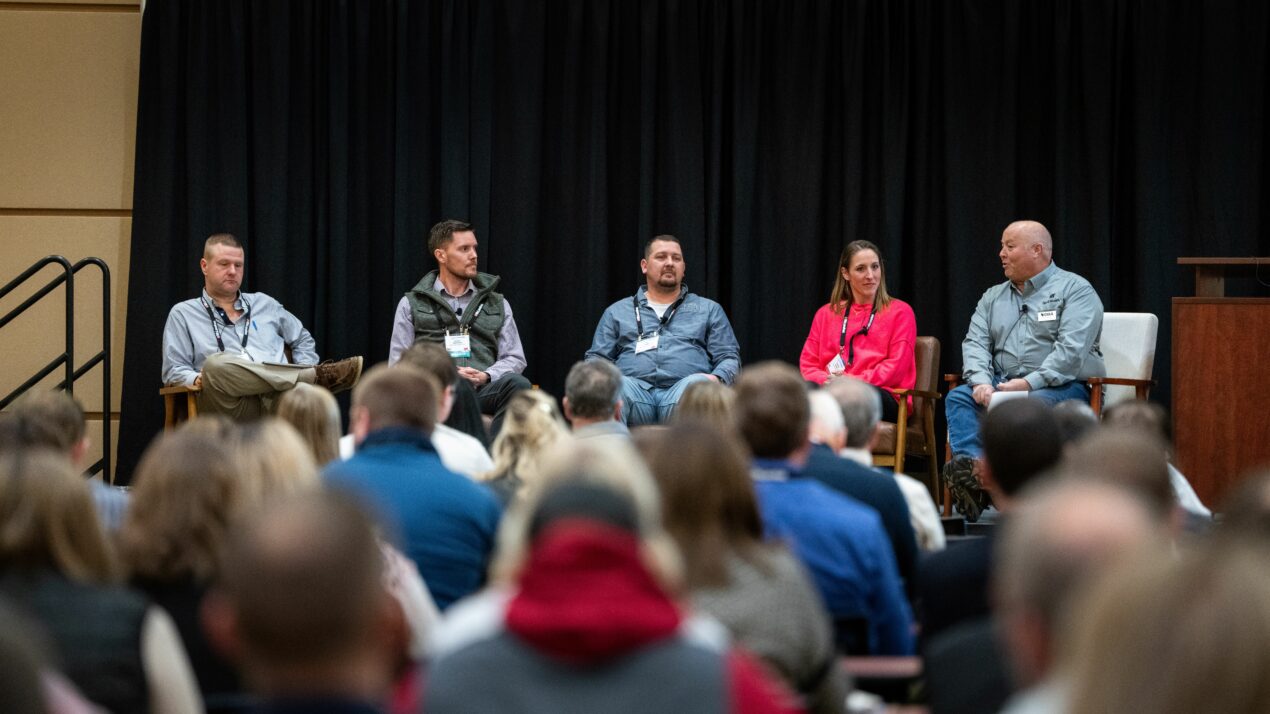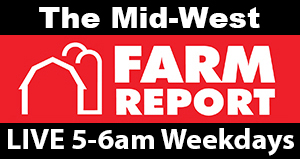
Running a dairy farm is a challenge, but imagine if that farm was spread across multiple locations. That’s something more and more farmers are considering as they look to add new sites to their dairies.
Four farmers who run dairies at multiple sites shared their insights on operation expansion during a panel discussion at the 2024 Dairy Strong conference in Green Bay. They spoke about what worked well and areas that could be improved. Forty-seven dairies across Wisconsin have more than one location.
Christine Bender of McFarlande Dairy in Dodge County, Wis.
Christine Bender, a sixth-generation dairy farmer from Watertown who farms with her husband and parents, expanded their operations to a second site last spring when they purchased another herd of cows and signed a five-year facilities lease on a property about 20 miles from their home dairy, McFarlande Dairy. They were looking at the option of eventually adding a rotary milking parlor but to make financial sense, the dairy would need more cows.
“We saw adding this herd as a stepping stone to being able to get that new parlor,” Bender said. “To run two sites successfully, the key for us is to have the key people in the right positions.”
JJ Pagel of Pagel’s Ponderosa Dairy, LLC in Kewaunee County, Wis.
Pagel Family Businesses, which includes Pagel’s Ponderosa Dairy, LLC, have run multiple sites since the early 2000s. JJ Pagel, who runs the Kewaunee County-based business with his siblings, said strong relationships with neighbors, vendors and employees are vital to making everything run smoothly. Good communication is essential to the dairies running smoothly.
“We have operation managers at each site. We bring in the teams from each site once a week, such as the maintenance guys in on Tuesday, and they talk about what’s going on,” said Pagel, whose dairies milk around 11,000 cows and farms about 15,000 acres.
The dairy also embraced technology, including a program that allows Pagel to view key information easily from an online dashboard.
Brent Czech of New Heights Dairy, LLC in Benton County, Minn.
During the past 17 years, Brent Czech has expanded his parent’s original farm operation, New Heights Dairy, LLC in Rice, Minnesota, to four different milking sites and a central calving facility. Altogether, the dairies have about 6,000 cows.
“For me, the biggest change was when we went from one dairy to two. I spent a lot of time trying to get information from others. People would see that we were busy and didn’t want to bother us. We spent a lot of time working on communication,” Czech said.
He hired a herdsman who worked with other employees to improve their communication; that herdsman then reports to Czech.
“I only have two people who report to me. I tell my managers to look at me as a consultant. I don’t want to step in the middle of something and disrupt the chain of command,” he said.
Jordan Matthews of Rosy-Lane Holsteins, LLC in Jefferson County, Wis.
Jordan Matthews, a partner at Rosy-Lane Holsteins, LLC., in Watertown, milks 1,750 cows at two sites. On the original site, they crop about 2,200 acres and then mix their own feed, which is trucked over to the other farm.
“This opportunity came up to expand by adding a second site and we decided to take it on and see where it leads us,” he said. “We keep things pretty simple at the satellite site.”
Thinking ahead and looking inward help ease stress of expansion
Bender has a good working relationship with the owners of the farm they rent. She buys the feed they grow and they also haul the dairy’s cattle.
“That has helped us ease into having multiple sites and allows me to focus more on the animals,” she said.
When thinking about expanding to a second site, Pagel said fully understanding the opportunity is essential.
“Look closely at what you are getting in to. Do you know the area? What about the facilities? And, most importantly, does it make financial sense?” he said.
Matthews pointed out one step farmers cannot skip when adding another site: Is there a place for the milk to go?
“We talked with our processors to make sure they would take the milk. Some are tapped out so you need to see if your current processor will take the additional milk or do you want to work with that site’s current processor? All things to think about,” he said.
When adding another dairy, Bender said it is also important to look inward and determine if you can take on the stress of running multiple sites.
“And never treat your second or third site or an employee as a second-stringer because they then begin acting that way,” he said. “Treat all the operations the same.”

Leave a Reply